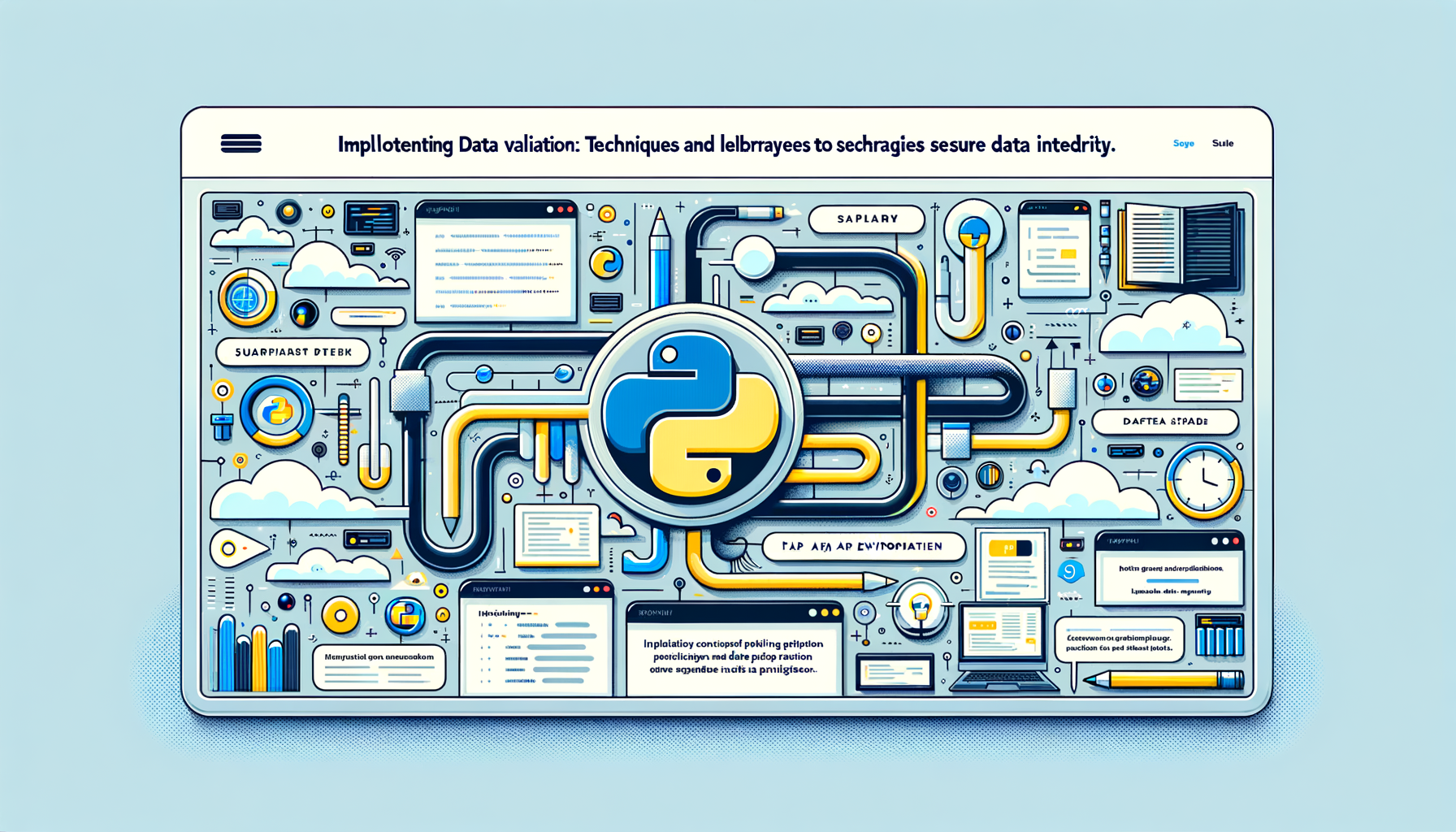Search Results
12 results found for ""

Dive into the world of Python's data classes and discover how they can transform your code from cluttered to concise, making data management a breeze for intermediate developers. This comprehensive guide walks you through practical implementations, real-world examples, and best practices to leverage data classes for optimal efficiency. Whether you're building applications or streamlining data handling, learn to write cleaner code that boosts readability and maintainability.

Learn how to implement the Strategy design pattern in Python to make your codebase more flexible, testable, and maintainable. This post walks through core concepts, practical examples using dataclasses, performance gains with caching, and how contextual decorators can enhance strategy behavior — all with clear, line-by-line explanations and best practices.

Dive into the world of Pythonic data structures and discover how to select the perfect one for your application's needs, from lists and dictionaries to advanced collections like deques and namedtuples. This comprehensive guide equips intermediate Python learners with practical examples, performance insights, and best practices to write efficient, idiomatic code. Whether you're building data-intensive apps or optimizing algorithms, learn to make informed choices that enhance readability and speed.

Python 3.10 introduced a powerful structural pattern matching syntax — the match statement — that transforms how you write branching logic. This post breaks down the match statement's concepts, demonstrates practical examples (from message routing in a real-time chat to parsing scraped API data), and shares best practices to write maintainable, performant code using pattern matching.

In the world of software development, failures are inevitable—especially in distributed systems where network hiccups or temporary outages can disrupt your Python applications. This comprehensive guide dives into implementing effective retry mechanisms with backoff strategies, empowering you to create robust, fault-tolerant code that handles transient errors gracefully. Whether you're building APIs or automating tasks, you'll learn practical techniques with code examples to enhance reliability, plus tips on integrating with scalable web apps and optimizing resources for peak performance.

Data integrity is foundational to reliable software. This post walks intermediate Python developers through practical validation strategies—from simple type checks to robust schema validation—with working code examples, performance tips, and integrations for real-world contexts like Airflow pipelines, multiprocessing workloads, and responsive Flask apps with WebSockets. Learn how to pick the right tools and patterns to keep your data correct, safe, and performant.

In today's data-driven world, automating workflows is essential for efficiency and scalability—enter Apache Airflow, the powerhouse tool for orchestrating complex data pipelines in Python. This guide walks you through creating robust, automated pipelines from scratch, complete with practical examples and best practices to streamline your data processes. Whether you're an intermediate Python developer looking to level up your ETL skills or seeking to integrate advanced techniques like API handling and parallel processing, you'll gain actionable insights to build reliable systems that save time and reduce errors.

Discover how Python's functools module can dramatically speed up your code with memoization. This post walks you step-by-step through built-in tools like lru_cache, creating custom memo decorators, and practical patterns that integrate dataclasses, collections, and even a simple Flask example to illustrate real-world uses.

Dive into the world of event-driven architecture (EDA) with Python and discover how to build responsive, scalable applications that react to changes in real-time. This comprehensive guide breaks down key patterns like publish-subscribe, provides hands-on code examples, and integrates best practices for code organization, function manipulation, and data structures to elevate your Python skills. Whether you're handling microservices or real-time data processing, you'll learn to implement EDA effectively, making your code more maintainable and efficient.

Logging is more than printing messages—it's the backbone of observability in production systems. This post walks through practical, production-ready logging patterns in Python: from basic configuration to asynchronous handlers, structured JSON logs, shipping logs to Apache Kafka for real-time pipelines, using functools for elegant logging decorators, and applying PEP 8 to keep logging code clean and maintainable.

Tired of boilerplate code cluttering your Python projects? Discover how Python's dataclasses module revolutionizes data handling by automating repetitive tasks like initialization and comparison, leading to more readable and maintainable code. In this comprehensive guide, we'll explore practical examples, best practices, and advanced techniques to help intermediate Python developers level up their skills and build robust applications with ease.

Python's f-strings are a powerful, readable way to produce formatted strings. This deep-dive covers advanced formatting features, best practices, pitfalls, and real-world examples — with code samples, performance tips, and links to testing, multiprocessing, and project-structuring guidance to make your code cleaner and more maintainable.